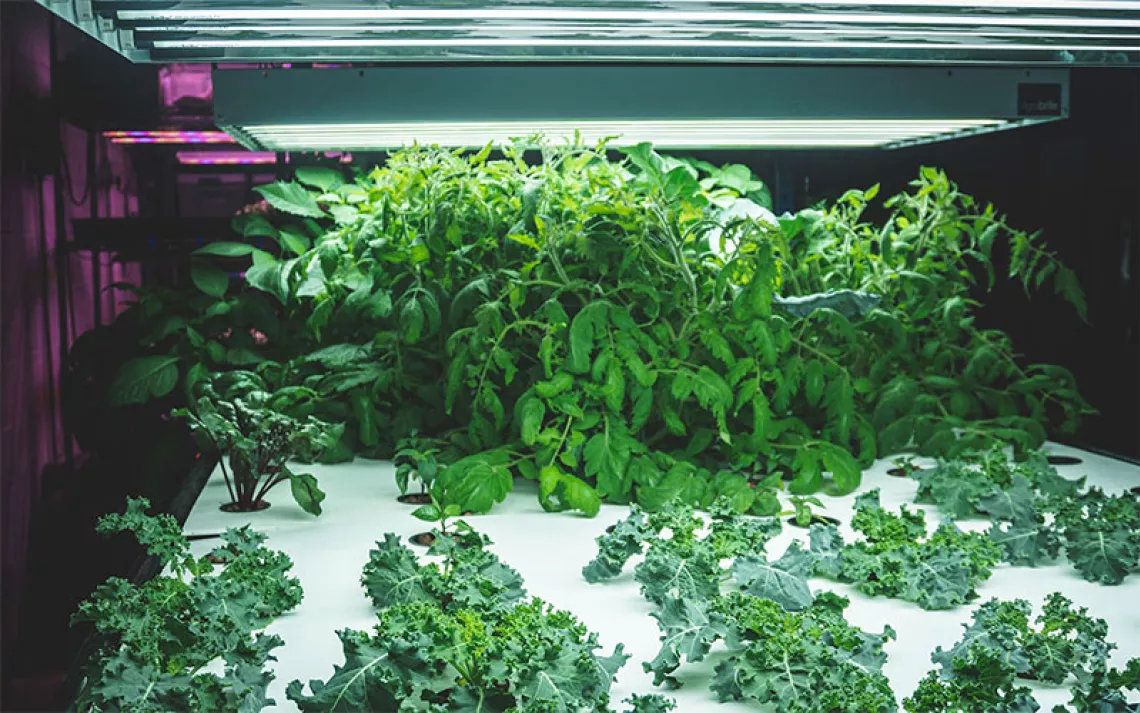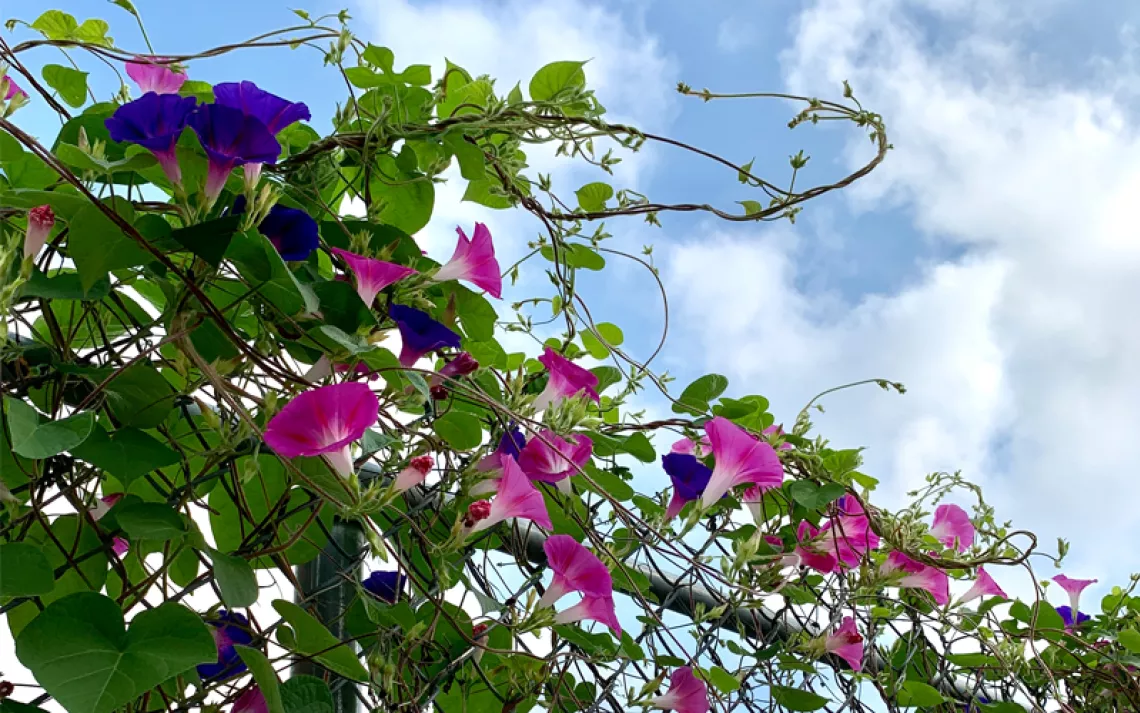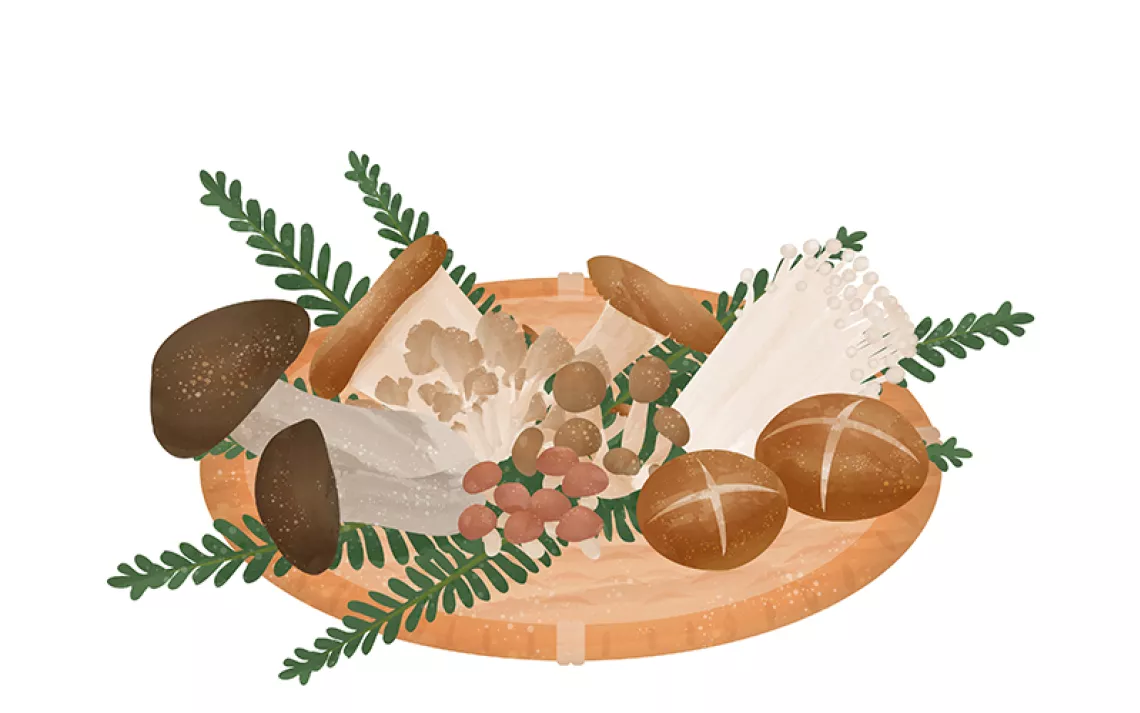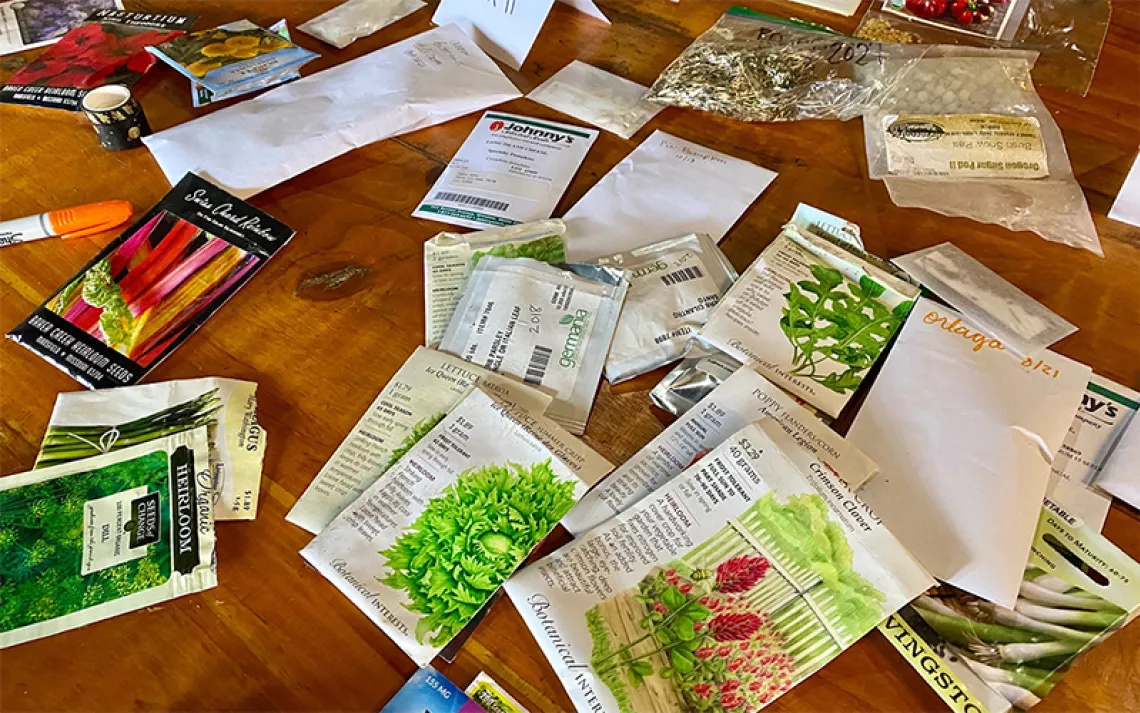How to Put Your Yard to Work for the Climate
Some strategic changes to your landscaping can help reduce your impact on the planet

Apple tree | Photograph by toysarefunforyou/iStock
You’ve reduced, reused, and recycled for years. You sign petitions, give to environmental organizations, and join protests. But it’s hard to feel like you’ve had much impact on a problem as enormous as climate change. How often have you asked yourself, “What can I, one lone person, really do to make a difference?”If you’re looking for meaningful ways to help our imperiled planet, start by putting your landscape to work for the climate.
Your Yard’s Climate Impact
Mowing the 40 million acres of lawn in the United States requires over 800 million gallons of gas every year. That means we’re spewing 16 billion pounds of CO2 into the atmosphere when we cut grass. Experts estimate that another 17 million gallons of gas are spilled annually while refilling lawn mowers. The infamous Exxon Valdez spill, by comparison, was just under 11 million gallons.
Dr. Rattan Lal, editor of the collection Carbon Sequestration in Urban Ecosystems and professor at the College of Food, Agriculture, and Environmental Science at Ohio State, explains that these numbers leave out some carbon-intensive inputs, like fertilizers and pesticides, each pound of which takes up to six pounds of carbon to produce.
Dr. Mark Hostetler, a professor of wildlife ecology and conservation at the University of Florida, notes that turf grass and other landscapes not adapted to local climates take a lot of inputs, like water and herbicides, which can significantly affect a yard’s environmental impact. Of particular concern: fertilizer, which breaks down into nitrous oxide, a greenhouse gas 300times more potent than CO2.
Climate experts now recognize that simply reducing global emissions will no longer suffice to avert catastrophic climate change, so we have to find ways to pull carbon out of the atmosphere. Dr. Lal encourages us to rethink urban land practices, which he believes can definitely be part of the climate solution. In addition to avoiding climate-polluting fertilizer and weed killer, planting a yard with shrubs and trees can sequester significantly more carbon than growing grass. When you replace carbon-intensive lawns with trees and shrubs, you also get the added benefit of home-energy savings, since the plants provide shade in summer and buffer winter winds. If those shrubs and trees produce food for your family, you also shrink the ecological footprint of your diet.
Creating a Climate-Friendly Yard
The first step to a climate-positive yard is minimizing carbon-intensive inputs like fertilizer, and replacing lawn with plants that store more carbon and require less energy and water. Every 12-foot tree in your yard can sequester half a ton of carbon each year. Larger trees sequester even more. If a tree happens to produce food as well, its carbon-reducing impact goes up while your food and grocery bill shrink.
Want to crunch some carbon-sequestration numbers yourself? Using your zip code and the size of your trees, the National Tree Benefits Calculator will let you estimate carbon sequestered, energy and water saved, as well as the impact on property value and air quality.
So if you replace some gas-guzzling grass with a couple pear trees and a few fruit bushes, in addition to years of free organic fruit, you’ll be sequestering hundreds of pounds of carbon each year. With the shading and transpiration these plants provide, the energy needed to cool your house will drop as well. Conifers planted to the north of your house can act as a windbreak and lessen your heating needs in winter. Strategic tree planting all over your yard can help you knock several tons of CO2 off the 21-ton average Americans contribute to our atmosphere.
Make Your Yard a Food Forest
Perennial food plants like fruiting trees and shrubs are key features of a practice called permaculture, short for perennial agriculture. Paula Westmoreland, a certified permaculture designer and owner of Ecological Designs in Minneapolis, helps homeowners to reconceive of their properties as productive food forests, rather than as energy-intensive, polluting lawns. Even a dwarf fruit tree, which sequesters 200 pounds of carbon and reduces electricity needed for cooling by 62 kilowatt-hours, yields many pounds of fruit year after year. Berry bushes planted around the tree can produce even more food.
Westmoreland also incorporates deep-rooted native plants, which move carbon into the soil while helping to manage stormwater runoff and give vital sustenance to endangered pollinators. Native wildflowers and grasses also provide food and habitat for wildlife. One yard at a time, Westmoreland is working to reestablish diversity and restore the web of life in otherwise sterile urban and suburban areas.
Don’t Forget to Compost
One final, important element in your climate-healing landscape is compost, which fertilizes your plants while keeping valuable organic matter out of the landfill, where it breaks down anaerobically and produces the potent greenhouse gas methane. So scout out a piece of lawn and replace it with your own compost-nourished mini-orchard.
 The Magazine of The Sierra Club
The Magazine of The Sierra Club



